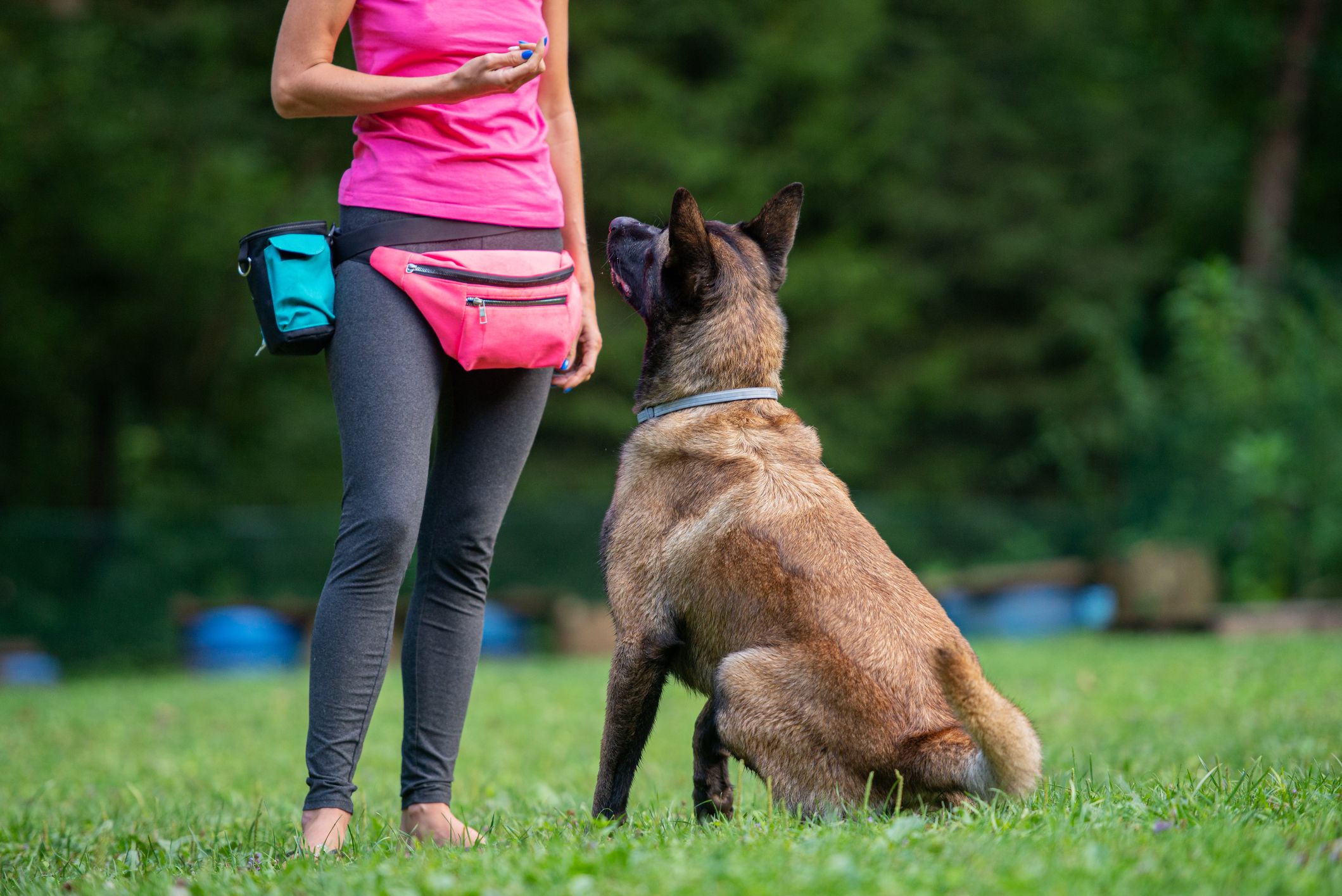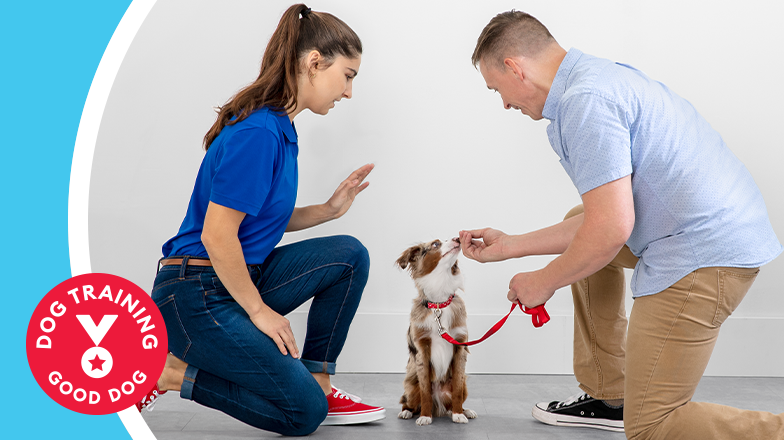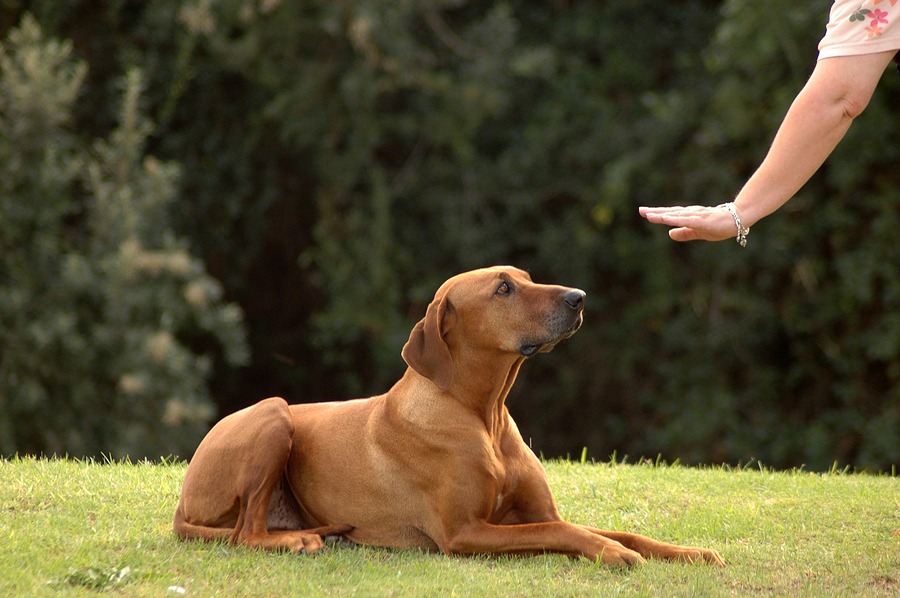Leading Pet Dog Training Strategies Every Owner Need To Know

Favorable Support Methods
Using positive reinforcement strategies is crucial for reliable pet dog training, as it cultivates a relying on bond between the pet and the instructor. This technique focuses on fulfilling desirable actions instead of punishing unfavorable ones, producing an atmosphere favorable to learning. Rewards can consist of deals with, appreciation, or playtime, which motivate pets to duplicate the behaviors that gain them these benefits.

Additionally, this approach boosts the pet dog's excitement for training sessions. They are much more engaged and receptive when pets associate training with positive experiences. Dog training. Past prompt actions modification, positive reinforcement encourages a collaborative relationship between the dog and fitness instructor, minimizing anxiousness and fear
To make the most of performance, it is important to provide incentives without delay, making certain the pet dog connects the habits with the reinforcement. Basically, positive support strategies not only yield better-trained dogs but likewise advertise an unified collaboration between canine and owner.
Clicker Training Technique
The remote control training technique is an extremely reliable method that constructs upon the concepts of favorable support by including a distinctive audio to mark wanted actions. This approach uses a small portable device that produces a clicking sound, allowing trainers to connect with their canines in a instant and clear way. When a canine executes an actions that the owner wishes to urge, the remote control is triggered, complied with by a benefit, normally in the type of treats or praise.
The secret to successful clicker training depends on uniformity and timing. It is vital to click at the specific moment the wanted habits happens, making sure that the pet dog links the audio with the activity and the subsequent incentive. This technique not just boosts communication but additionally promotes a stronger bond between the owner and the pet, as it encourages engagement and interaction throughout training sessions.
Clicker training can be used to a variety of commands and habits, from fundamental obedience to much more intricate techniques. Its versatility and effectiveness make it a popular technique amongst expert instructors and pet dog proprietors alike, leading the way for a well-trained and receptive canine friend.
Leash Training Basics
Effective chain training is crucial for making sure a safe and delightful walking experience for both canines and their proprietors. Dog training. Leash training must start early and be come close to with patience and consistency. Beginning by selecting an ideal chain and collar or harness. A flat collar might benefit some pet dogs, while others might benefit from a harness that reduces drawing.
Present your pet to the chain slowly, permitting them to discover it in a comfy environment. Practice loose-leash walking once they are accustomed. This entails rewarding your canine for walking beside you instead of pulling ahead. Use deals with and appreciation to reinforce preferred habits, and make certain to continue to be tranquil and assertive.
If your pet starts to draw, stop walking right away. In addition, technique numerous walking environments to aid your pet adjust to disturbances.
Normal method will strengthen your canine's understanding of chain decorum. Bear in mind that leash training is an ongoing procedure; persistence and uniformity will certainly yield the most effective outcomes, fostering a positive experience for both you and your canine companion.
Socializing Approaches
Socializing is a critical element of pet dog training that must ideally start during puppyhood yet can be useful at any kind of age. Efficient socialization assists dogs create confidence and decreases the likelihood of behavioral concerns. To execute effective socialization methods, reveal your pet to a range of environments, individuals, and various other pets.
Begin with regulated settings, such as young puppy classes or arranged playgroups, where young dogs can engage securely. Slowly introduce your dog to new experiences, consisting of various noises, surface areas, and tasks. Guarantee these encounters are favorable and satisfying to establish a feeling of safety.
For grown-up canines or those lacking exposure, begin with low-stress situations. Short, positive interactions with friendly humans and tranquil dogs can produce positive associations. Utilize deals with and appreciation to enhance preferable actions throughout these experiences.

Consistency and Perseverance
Identifying the importance of uniformity and perseverance in dog training is important for achieving long lasting outcomes. Irregular training can lead to complication, making it tough for the pet dog to realize commands or behaviors, eventually hindering progression.
Moreover, patience is a vital element of effective training. Pets, like people, find out at their own speed. Some might realize principles Dog training quickly, while others might take much longer. It is vital for proprietors to continue to be encouraging and tranquil, strengthening positive habits without resorting to irritation or punishment. This fosters a trusting connection in between the dog and proprietor, encouraging a more passionate and eager student.
To grow consistency and persistence, establish a routine training routine, utilize the very same commands, and make certain that all relative apply the very same training principles - Dog training. By doing so, you produce a steady atmosphere for learning, allowing your canine to flourish and develop into a well-behaved buddy
Verdict
To conclude, effective canine training techniques, such as favorable support, remote control training, and appropriate leash training, are vital for cultivating a healthy owner-dog relationship. Additionally, applying socializing methods and keeping uniformity and persistence throughout the training procedure adds dramatically to a dog's total well-being. By incorporating these techniques, canine owners can facilitate the development of well-adjusted, loyal pet dogs, ultimately enhancing the quality of life for both view publisher site the proprietor and the pet dog.
Among the most popular techniques are positive support, clicker training, and chain training, each offering special advantages that add to a mannerly pet dog. As we discover these basic methods, it becomes obvious that mastering their nuances can dramatically affect the training experience and the pet's overall actions.Making use of favorable reinforcement strategies is crucial for effective pet dog training, as it cultivates a relying on bond between the instructor and the canine.In conclusion, efficient pet dog training methods, such as favorable reinforcement, clicker training, and correct chain training, are important for cultivating a healthy owner-dog relationship. By integrating these techniques, pet dog owners can facilitate the growth of well-adjusted, loyal pets, eventually improving the high quality of life for both the owner and the dog.
Comments on “How Dog Training Can Improve Your Pet's Quality of Life and Behavior”